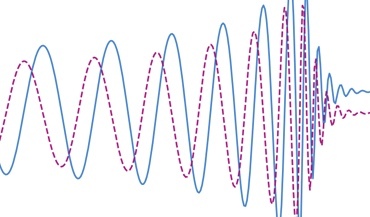 Gravitational memory and spacetime symmetries
Gravitational memory and spacetime symmetries
Symmetries of spacetime infinitely far away from gravitational fields may hint at new laws of nature
Before using this command please follow Eric Thrane's instructions to set up a gsissh-connection with LIGO cluster using LDG client.
ssh boris.goncharov@ssh.ligo.orgTo copy files to LIGO CIT use this command:
gsiscp file_path/file_name ldas-pcdev2.ligo.caltech.edu:/home/boris.goncharov/file_name
Add -r to copy folders.
LIGO strain data from Hanford (H1) and Livingston (L1) detectors is stored in .GWF files on the CIT computer cluster. In MATLAB software used by LIGO Stochastic group, i.e. STAMP or Stochastic.m, we need the following:
Files with .gwf format were designed for LIGO-Virgo gravitational-wave frame data. However, there are not many ways to view the list of channels, which are often required to load the data. Here is a useful command to view the list of channels:
FrChannels file_name
Note, this command runs by default on LIGO CIT, but not on OzStar or Virgo CNAF.
HDF5-type files are very common for storing not just LIGO data, but pretty much any kind of data. Here is a useful command to view what data is contained within an hdf5 file:
h5ls file_name
Note, this command runs by default on LIGO CIT and Virgo CNAF, but not on OzStar.
After taking a Fourier transform of LIGO strain data we get power-spectral density (PSD).
It has units [strain^2 / Hz].
After taking a square root of PSD we get amplitude spectral density (ASD).
It has units [strain / sqrt(Hz)]
 Gravitational memory and spacetime symmetries
Gravitational memory and spacetime symmetries
Symmetries of spacetime infinitely far away from gravitational fields may hint at new laws of nature
 The nanohertz gravitational wave background
The nanohertz gravitational wave background
Is the common-spectrum process observed with pulsar timing arrays a precursor to the detection?